Will next Nashville mayor improve traffic, bring light rail? Here's what candidates say.
Two years after the New York Times in 2013 recognized Nashville’s rapid growth and cultural vibrancy by dubbing it the nation’s next “it” city, then-Mayor Karl Dean’s transit plan quietly died.
It was the country’s hottest market, caught flat-footed without a substantive plan to handle the scores of people flocking to its sprawling metro area.
The next mayor, Megan Barry, came into office with her sights set on improving Nashville’s car-reliant transportation system. Barry unveiled a plan in October 2017 to create a mass transit system in Nashville featuring several light rail lines and bus rapid transit corridors throughout the city. Despite a massive support campaign, the plan crashed in a citywide referendum in 2018, struck down by a nearly two-to-one margin. Three candidates interviewed for this story — Davidson County assessor of property Vivian Wilhoite, former educator Natisha Brooks and business leader Alice Rolli — said they voted against it. (Jim Gingrich, retired AllianceBernstein executive, did not live in Nashville at the time of the referendum.)
There’s no shortage of reasons for its failure, according to experts, ranging from a high-profile scandal involving Barry, the plan’s primary champion, to rushed and insular planning that overlooked input from the city’s minority populations.
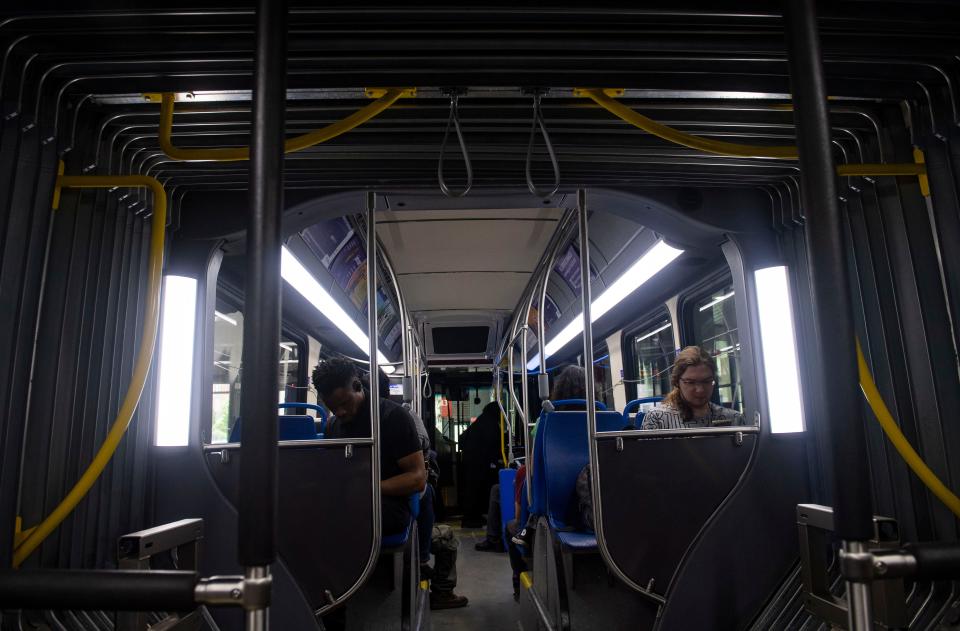
It's been five years since the referendum’s failure, and there’s been little change to Nashville’s transportation. The large majority of people who live and work in Davidson County drive or carpool, congesting the city’s primary corridors. That's expected to only worsen as the population grows. Less than 1% of residents take public transit to work, and the city’s only train line, connecting Lebanon and downtown Nashville, is among the least-used commuter rail systems in the country.
Ahead of August’s mayoral election, half of all voters say improving public transportation should be a top priority for the city’s next leader. Most candidates speak about it with a sense of urgency, recognizing that doing nothing now could mean disaster in a few decades.
Their plans vary from expanding interstates to establishing light rail or bus-rapid transit lines to synchronizing traffic lights. Here’s what they told us.
The candidates
Natisha Brooks, former educator and education consultant
Fran Bush, former Nashville school board member
Heidi Campbell, state senator representing parts of Nashville
Bernie Cox, business owner
Jim Gingrich, former chief operating officer of AllianceBernstein
Sharon Hurt, at-large Metro Nashville Council member
Stephanie Johnson, community activist
Freddie O'Connell, Metro Nashville Council member representing Nashville's downtown district
Alice Rolli, business and education strategist, and campaign manager for former Sen. Lamar Alexander
Vivian Wilhoite, Davidson County assessor of property
Matt Wiltshire, former economic development director with experience in affordable housing
Jeff Yarbro, state senator representing parts of Nashville
The big picture: Bus rapid transit and light rail
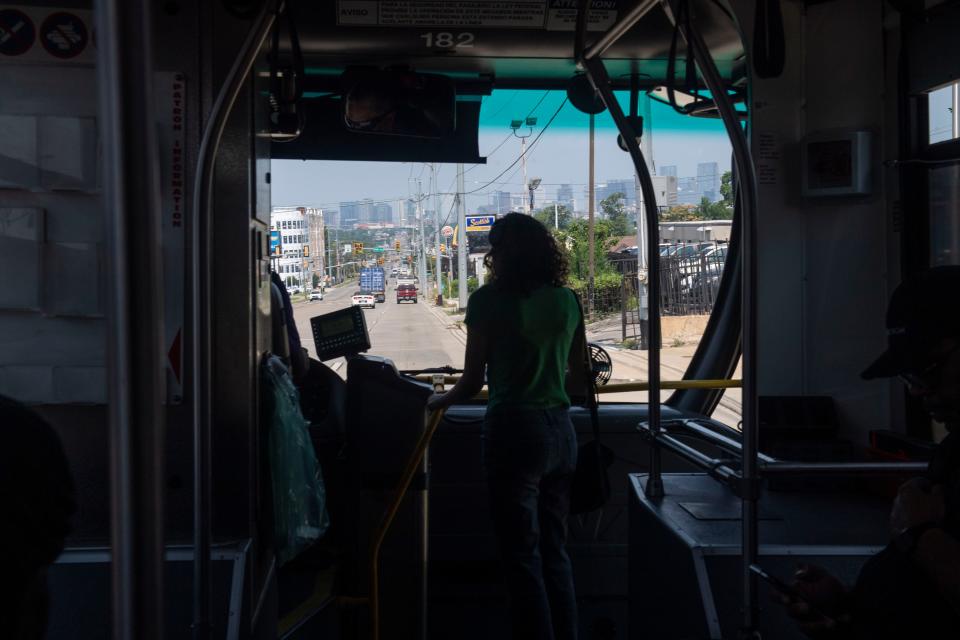
While they differ on specifics, nearly every candidate has gotten behind the idea of creating a bus rapid transit (BRT) system.
BRT involves buses running along a main corridor with their own dedicated lanes and priority at intersections to prevent slowdowns. It’s often touted as a way to achieve similar capacity and speed as light rail at a lower cost.
Many pointed to Murfreesboro Pike as one of the places where BRT could first be implemented. Gabrielle Ellis, a driver for WeGo, Nashville’s transit authority, said it’s the current bus system’s busiest line. She doesn’t ride the bus when she’s not working, but if that line was BRT, she said she would.
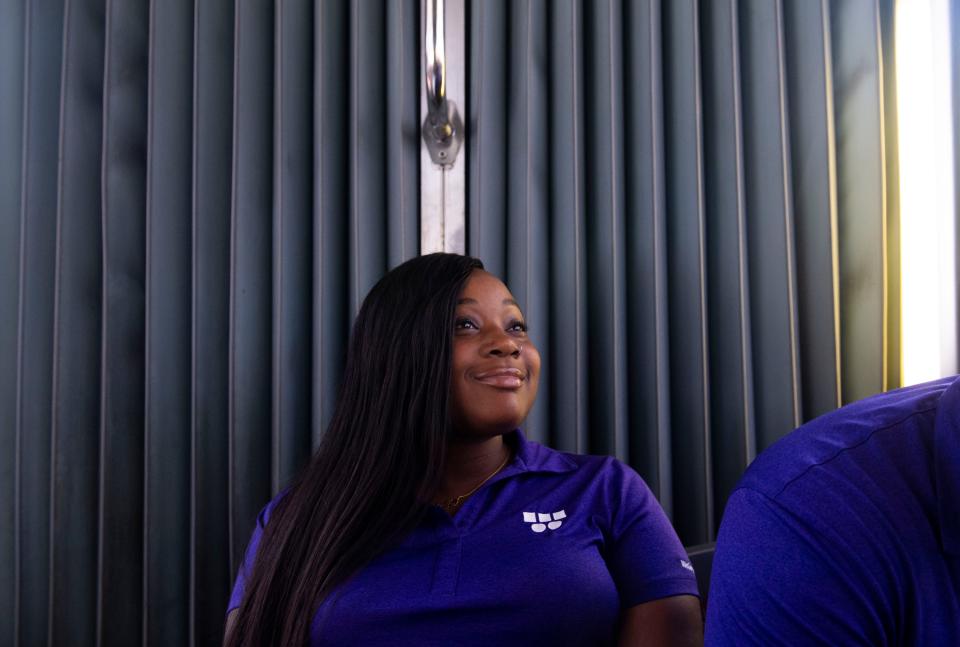
Hurt, who has dubbed a potential BRT system along Murfreesboro Pike the “Titans Express,” said she thinks people will be drawn to the idea since it could eliminate them being stuck in traffic for hours. Rolli added that BRT could help with parking and traffic congestion downtown.
Wiltshire said he thinks the city could get as much as 70% of the project paid for with federal dollars due to the line’s high bus ridership.
Hurt and O’Connell said they think the city could possibly move up to light rail along Murfreesboro Pike after successfully implementing BRT at a lower cost.
“But I'm not expecting to try to develop a light rail-heavy plan,” O’Connell said. “I think if we develop high-quality, gold standard bus rapid transit in multiple scenarios and show that we can do high-capacity transit, we can probably graduate to a light rail line from the airport, but the rest of the city will be very well served by a lower cost-per-mile for developing bus rapid transit.”
Brooks went the furthest of any candidate by proposing a monorail system, much more expensive than light rail, and said it could be funded by portions of Metro's hospitality tax and funds from the gas tax "that is currently not being used to fix our potholes in Davidson County."
Wiltshire said he thinks Nashville’s narrow streets don’t make light rail a viable option around downtown, although he’s still open to the idea.
Nashville’s current bus system
O'Connell said the city's bus system is improving and the next mayor needs to make sure that continues.
Part of his day-one plan is to "go around to every major employer that's ever received an incentive and have a conversation about participating in WeGo Ride," an employer-sponsored bus incentive program. He'd also make sure to use American Rescue Plan Act funding secured for all four of Nashville's historically Black colleges and universities to get them successfully onboarded with WeGo Ride to build stable ridership from local employers and universities.
Campbell said she wants to improve the bus service by making it run 24 hours and creating more lateral lines, rather than the current hub-and-spoke model that often requires riders to take a trip downtown to connect to other parts of the city.
While she didn't have specifics on how it could be done, Wilhoite had another proposal for increasing bus ridership: making it free. Several cities have successfully implemented zero-fare bus trips, she said. But pulling it off can be tricky.
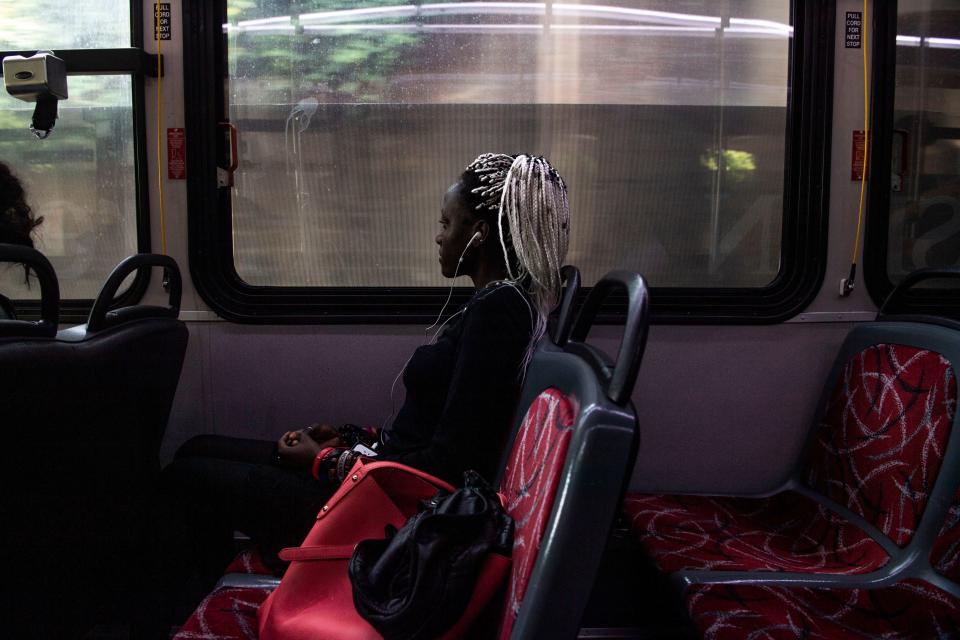
Pedestrian safety
Nashville’s streets are particularly dangerous compared to other cities of its size. Gingrich pointed to pedestrian deaths as the number one transportation issue in the city.
“We had 49 pedestrians killed last year. That is completely unacceptable, and there are very pragmatic things that we could do immediately,” from redesigning dangerous intersections, creating better crossing areas and building more sidewalks, Gingrich said.
O'Connell also addressed the danger that comes with walking on Nashville's streets, many of which lack sidewalks. He pointed to the Nashville Zoo and the new Nashville SC stadium as recent examples of failure to create sidewalks around large community attractions.
Unique ideas
Radnor Yard: Campbell revived the idea to move Radnor Yard outside the city and convert existing freight lines into commuter rail or use the space as a hub for park and ride shuttles into town.
Meetings on the bus?: A former Metro Transit Authority Board member, O’Connell said he promises to be a transit-riding mayor and proposed holding impromptu “Town Halls” on buses, saying “one of the biggest obstacles to people using transit is frankly a lack of familiarity."
Linking housing and transit: For Yarbro, many of the city’s transit issues are directly linked to housing. “Right now, it feels like our affordable housing strategy is to make people drive until they can afford something — that tends to be a bad housing strategy and an even worse transportation strategy.” He said the city should encourage density and creating more affordable housing in the city would cut down on commute times and reduce traffic.
Flex time: Hurt proposed that schools start at staggered times to alleviate traffic congestion at rush hours. The same idea could be applied for some Metro workers and encouraged at businesses in the city.
Each candidate's plan for transit, summarized
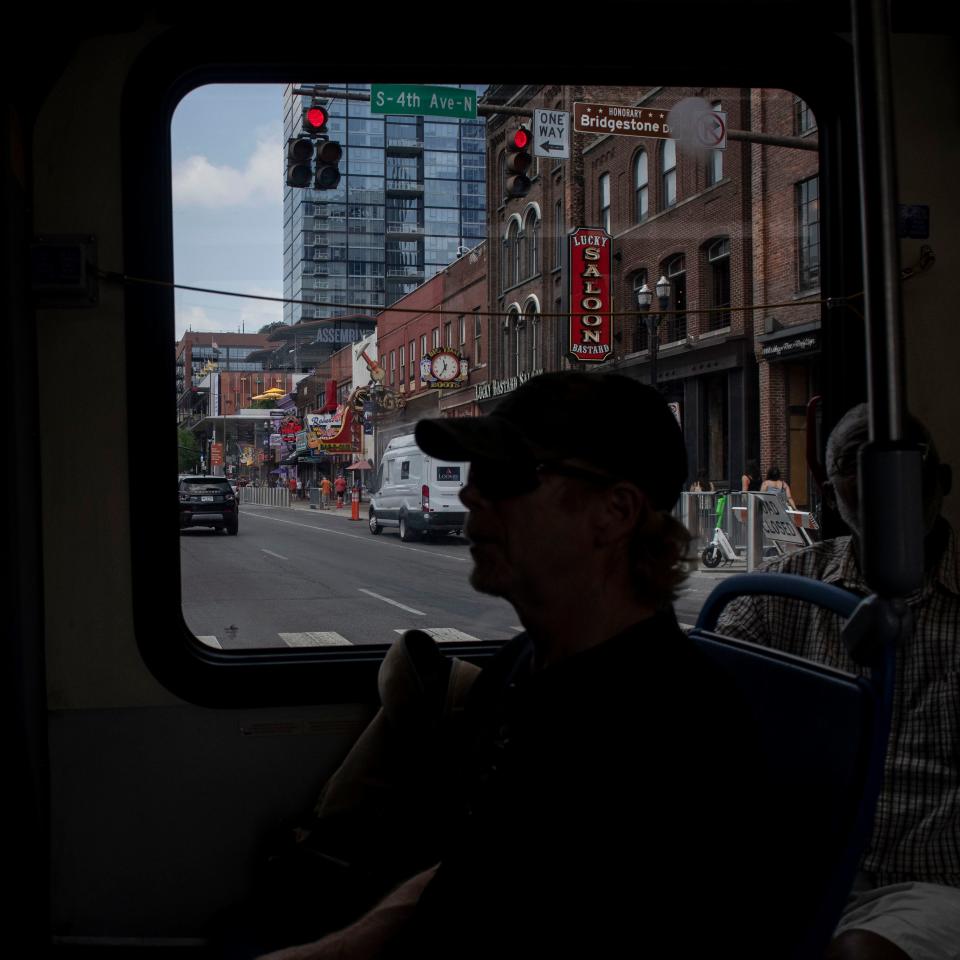
Brooks: The first thing Brooks would do in office is commission a survey to create a plan for transit. Hopefully, she says, it will include BRT from Murfreesboro to downtown and from downtown to the airport. The big picture plan for Brooks is a monorail system. She voted against the 2018 referendum because it wasn't clear how it would be paid for and was too wordy — "Keep It Simple," Brooks says. On funding: Her monorail system could be funded by hospitality and gas taxes, she says.
Bush: Bush told WKRN that she would like to reintroduce light rail, increase the number of bus routes in the city and create safe bike lanes.
Campbell: She wants to keep multimodal transit at the forefront while improving the city’s existing bus service by making it run 24 hours and creating more lateral lines, rather than the current hub-and-spoke model that often requires riders to take a trip downtown to connect to other parts of the city. She’s also in favor of relocating Radnor Yard somewhere outside the urban area, giving the city the option to convert existing freight rail to commuter lines or use the space as a BRT hub. On funding: Can draw funding from federal and state levels.
Cox: From his website: "... [m]y position is that we must manage that growth within our budgetary constraints, which means we cannot and should not invest billions of borrowed money now to make a pipe dream of transportation solutions. We can do more with less, if we’re smart about incremental improvements."
Gingrich: Pedestrian safety is one of Gingrich’s primary concerns, and he wants to build more sidewalks and improve intersections. He said Nashville needs to take a regional approach to transit and get funding and input from surrounding counties. Gingrich’s day-one focus is on earning trust with commuters before beginning a mass transit system by showing that the city can actually deliver on low-stakes, routine tasks like getting traffic lights synchronized and keeping roads in good condition. On funding: Surrounding counties should pitch in.
Hurt: She is a major proponent of creating a BRT system to transport commuters coming from outside Davidson County. On reducing traffic congestion, Hurt proposes starting schools at differing times to cut down on rush-hour traffic and encouraging businesses to allow employees to work from home. She also said the city needs to create more electric vehicle charging stations. On funding: Seek funding from outside counties whose residents commute to Nashville.
Johnson: Johnson told WKRN that each council member should "work with the local transit authority to implement circular transportation hubs within their districts." Part of the battle in improving Nashville's transportation, according to Johnson, comes down to changing a culture that is heavily dependent on cars.
O’Connell: His focus is first on expanding WeGo’s current network, changing it from the current hub-and-spoke model to one with different community transit centers “that offer not just economic development opportunities and capital investment, but then really do link parts of the city that allow you not to have to go into downtown.” The city has the opportunity for gold-standard BRT on a lot of major corridors, O’Connell said. On funding: The mayor should work with the National League of Cities to identify best practices to receive federal funding, and be aware of the importance of federal and regional partnerships.
Rolli: “The single most important thing for the next mayor to do in '23 to '27 is to quarterback the process to have a dedicated transit (referendum)— which I agree with holding.” She supports “last mile” approaches to alleviating traffic congestion, including park and ride BRT and shuttles from the airport. Rolli voted against the 2018 referendum, citing its high price tag. On funding: Rolli emphasized that the next mayor would have to work with leaders of surrounding counties and municipalities to repeal the 2006 County Powers Act she said has left Davidson County unable to secure necessary funding.
Wilhoite: One of three candidates who voted against the 2018 referendum, she said she felt that plan left out her community and those who live on the outskirts of the city. Wilhoite’s focus is on expanding ridership on Nashville's existing bus system and expanding it to reach more parts of the city, and she hasn’t expressed any specific mass transit plans. She also said Interstate 840 should be expanded to wrap around the city. On funding: Other counties should have to pitch in since so many people commute into Nashville each day.
Wiltshire: He is another major supporter of a BRT line on Murfreesboro Pike, citing its low cost compared to light rail. It could serve as a proof of concept for BRT in other parts of the city. In the meantime, the city should improve its existing bus system and listen to residents on what routes need to be added. As for other plans, he “want[s] to engage with the public and figure out what the public wants.” On funding: He believes the city is well-positioned to receive federal funding for a BRT line on Murfreesboro Pike and adds that the Airport Authority can pay for all of the infrastructure from the airport to the first transit stop.
Yarbro: “Right now, it feels like our affordable housing strategy is to make people drive until they can afford something — that tends to be a bad housing strategy and an even worse transportation strategy.” He believes that encouraging density and creating more affordable housing in the city will cut down on commute times and reduce traffic, adding that it needs to be more possible to live without a car in Nashville. His step one is taking care of and better utilizing the infrastructure we have and increasing ridership on the transit system in place. On funding: We're not going to get the transit system befitting a great city without dedicated funding.
Evan Mealins is the justice reporter for The Tennessean. Contact him at emealins@gannett.com or follow him on Twitter @EvanMealins.
This article originally appeared on Nashville Tennessean: Nashville mayoral election: Candidates' plans to improve traffic

